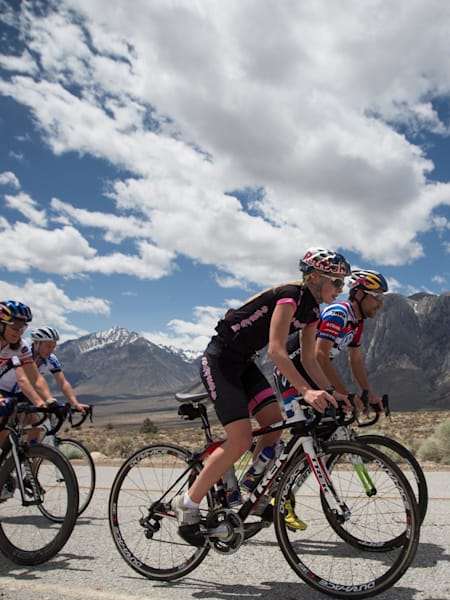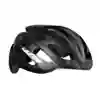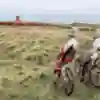Whether it’s feeling your legs turn to jelly on a punishing climb high in the mountains, or gleefully speeding past a traffic jam on the work commute, cycling is anything you want it to be. It's freedom and fitness rolled into one, and right now it's more popular across Ireland than ever.
The country has a rich history with the activity dating back to 1869, when Dungarvan Ramblers Cycling Club organised the country’s first ever event on two wheels; and the milestones keep coming. In October 2024, just a week after waxing lyrical about Ireland's MTB scene and first-class trails that shaped him, Red Bull racer Ronan Dunne finished fourth in the overall UCI Downhill World Championships – a highest ever finish for an Irishman.
Matteo Cigala, a multi-terrain, multi-title winning cyclist and specialist coach from Lake Garda, Italy, but now based in Wicklow, has seen a big shift in how seriously people are taking the sport across Ireland:
“When I moved here 10 years ago, I definitely saw a big gap compared to Northern Italy, which is basically the Silicon Valley of cycling where all the brands are coming from. However, it's getting much better and much bigger in Ireland, and there are more events coming in every year. This year, we had the UCI Gran Fondo World Series in Sligo [June 2024] and the first ever L'Étape Ireland [September 2024].
So then, to help take the fear out of it all, allow the Italian trainer to deftly guide you through the pitfalls of starting out in cycling...
01
Getting started: choosing the perfect bike as a beginner
Factors to consider when selecting a bike include type, size, material and extra features. One day you might even reach the level where you’re blitzing the Tour De France on your very own custom-made specialist bike for Red Bull Bora-Hansgrohe. For now though, it might be worth putting the brakes on those ambitions and finding the bike that works best for you, both with regards to price and type – particularly with options running the gamut from road to mountain to hybrid and more.
“For beginner cyclists there are a lot of options and ultimately it becomes about the budget of the person,” says Matteo. “There is still obviously aluminium, which is cheap and popular, but carbon bikes definitely offer the most performance. So, start with a good carbon frame as you can always upgrade wheels and groupset afterwards.
"Remember that the wheels you buy make a big difference, too. They’re driving the bike and the weight of those can be crucial. You can buy a really good overall setup from between €1,000 and €1,500."
Wherever possible, talk to a specialist retailer in-depth about any possible bike and be sure to fully test it out before parting with cash, just like you might a car. "Different bike brands have a different type of geometry to suit various needs and styles," reveals Matteo. "Whether you want a bike solely to commute to work on, or want more of a performance bike it's still worth checking how any entry-level model feels on your body."
What type of bike works best for me?
Do your friends go mountain biking on weekends? Might BMX be more your thing? Does the call of the open road make you want to dress head to toe in Lycra? And what about cyclo-cross?
If you're still not 100% sure which cycling discipline you want to pursue, Matteo says a hybrid bike could be a smart way to go as it gives you a couple of options.
“For beginners that are unsure about their direction and discipline, a gravel bike is the one to go for because it has the option for riders to use road tires as well as gravel tires and cyclo-cross tires. So, you can actually do three disciplines with the same bike just by changing the tires and wheels."
As it happens, Matteo finished second in 2023’s Gravel World Championship and enjoys the fact he can use the same bike for different disciplines when he's travelling: “Last Saturday I entered a road race in Portugal and won. The next day I just put my gravel wheels with 40mm tires on and I won a gravel race with the same bike."
He also adds that that a good gravel tire can be used both on-road and off-road, offering riders even more freedom: "Ultimately gravel cycling is about the exploration and visiting new places, and the freedom that the gravel bike gives you to take different routes that maybe you wouldn't reach on a road."
Then there’s always the option of going electric, which is another conversational entirely.... Read more about that here.
02
Essential accessories and go-to gadgets for a more enjoyable ride
Knee pads? Elbow pads? That’s important if you’re doing BMX or downhill mountain biking of course, though a 100% non-negotiable with any bike is a good helmet. It’s your first port of call and Matteo is quick to remind his clients to never skimp on quality:
“Beginners need a good helmet with the right technology. I always recommend one with MIPS [Multi-Directional Impact Protection System] technology.” This design boasts a low friction layer underneath the helmet lining which provides higher protection against rotational impact in a crash. It retails from between €50 to €200. “Your helmet is your safety,” adds Matteo. "Even if you are going for a short cycle, it can save your life, so invest in a good helmet."
Elsewhere, specialised clothing, particularly high-vis cycle gear for anyone looking to ride in the evening, is always a valuable purchase (you may also find some fetching commuter clobber at Alpha Tauri), and a good set of lights is another essential.
What about gadgets?
Gadgets can offer big gains in not only terms of safety but also performance. In just a few purchases– radar rear lights, smart lights for the handlebars, GPS/fitness trackers – you can construct a certified smart bike in no time. Matteo is no stranger to a dollop of high-end tech himself:
“There are radars that can even warn you when a car is coming, and a light that changes strength based on how a car is approaching," says Matteo. He's also a big fan of the cameras and GoPro devices available for action sports. "If you are trying to capture beautiful moments these devices are great fun. I use a 360 camera which I put on the front of my bike."
What about clipless pedals?
Ever wondered why cyclists use ‘clipless pedals’ while remaining very much clipped in? Simple: the name refers to the fact this foot-to-pedal setup no longer requires toe clips. Instead, it's usually more of a cleat/bolt/mould underneath the shoe that locks the rider in with little fuss, allowing them to unclip by rotating a foot. Enjoyed by both road cyclists and mountain bikers alike, clipless pedals make it easier to complete full circles while pedalling, which in turn saves energy and enables you to enjoy longer rides with more consistent performances.
Even so, it can take a while to get used to clipless pedals. And if you’re worried about toppling over on a road bike every time you stop at traffic lights, there are ways to get used to the feeling...
“A lot of beginners start with MTB pedals, because you can clip in on both sides and it's easy to get in and out of them " says Matteo. "They're the cheaper option, too, making them an easy way for beginners to better understand how to use the clip-in option and then as you progress you can always upgrade to road pedals which are a bit stiffer and harder to clip in. But you get a better performance."
03
What's a good cycling training plan for beginners?
“Anywhere between one to three sessions a week is enough to build up strength on the bike early on”, says Matteo. Mind you, exactly what distances you clock up and the efforts you put in behind the handlebars will depend on your condition and ultimate objective.
“Find your goal,” says Matteo. “Do you want to do an event at the end of it? Are you trying to be in better shape? You need a reason for cycling before building any training programme.
Tri star Lucy Charles Barclay crunches data from every training session
© Graeme Murray/ Red Bull Content Pool
“Age, resting heart rate and other factors will come into it. And the biggest mistake I notice among beginners is when people train without information such as a health monitor or a power meter, and are therefore training with no zones. If you’re going out full-gas for an hour on the bike and coming back without data, you’re not going to be able to build on anything."
This is where a specialised coach such as Matteo can help you to harness data and construct a tailor-made training plan accordingly
Once you've found your general fitness patterns by monitoring Strava and the rest of it, one good rule of thumb for rookie riders, says Matteo, is cycling at 70% of your maximum level, which should keep you cycling for longer without sacrificing form. If you later find yourself struggling for any reason, perhaps after a massive gym session, there may be times when you to drop it down to 50% effort on the bike to avoid burnout: “This will help cyclists deal with DOMS [delayed onset muscle soreness].”
What should your recovery look like?
“Another mistake beginners make is forgetting about their recovery,” says Matteo, who believes rest days are crucial. “Realising the importance of recovery is something that comes with experience, particularly with those early training adaptations. If I schedule a rest day for a client and they still want to go out and push that day, they'll often find out that these active recovery days are there for a reason."
Always stay hydrated before, after and during a ride. Oh, and try not to go too hard, too often if you aren't seeing fitness results. For road cyclists, saddle sores can be treated with Chamois Cream, but if the pain gets too much you'll either need to rest until you feel better or even look at changing your seat position.
What is an average cycling speed for a beginner?
“Well, that depends on a lot of factors like the wind and terrain, says Matteo. "But if you're a beginner, 15-20km/h on the flat is a good start. As you progress and perhaps get into events you'll see racers training at 30 km/h on average. So that's a good indication for newcomers: aim for 15-20km/h and look to move up to 20-25km/h as your riding improves."
04
How do you stay motivated and overcome common challenges faced by beginners?
Ronan Dunne is one of the fastest riders in the UCI DH World Series
© Bartek Wolinski / Red Bull Content Pool
According to Matteo, staying on track as a cyclist depends on your goals and how successfully you're moving towards them. Finding a consistent training pattern is also a big help: "The speed of the repetition can make a big difference."
Naturally, if you're cycling around Ireland it's not going to be all sunshine and rainbows. There will be howling wind, frequent downpours and worse. This is another reason Matteo, who organises cycling tours for large groups across Europe, covering the Alps right down to the Algarve, reckons a change of scenery can provide a much needed mental boost when riders find themselves stuck in a rut.
Even at home, the trainer says keeping an eye on weather apps for updates well in advance of big rides or days out a trail can help you to better plan your day, ensuring you're ready for whatever comes your way.
Additionally, a turbo trainer or smart bike is a great way to mix things up. It's not only handy if you're short on time, but also a great way to 'gameify' your training. During the COVID pandemic, Matteo put together a Zwift Team in collaboration with Cycling Ireland and ended up becoming one of the top five Zwift riders in the world.
"That period was fun. And Zwift is for everyone, it's a community. It's gamification, too, as you can unlock new routes and virtual achievements. There are different platforms for virtual indoor training that can really help you to stay motivated while enjoying the sport from the comfort of your own home – especially in winter when there's less daylight."
What muscles does cycling work?
Cycling is a great all-round fitness tool, but admittedly it's largely lower body work, as Matteo explains: "The quads are very, very important and they're the most used muscle. "The glutes also play a big part, but if you’re a climber and leaning forward on your bike, and lower on the saddle, you are mostly building those quads."
What are some good gym exercises for becoming a faster cyclist?
Explosive exercises – "squats, a farmer’s walk, the leg press" – are always a good accompaniment for cycle training, according to Matteo. He also recommends any stretch or workout targeting the core as this builds a more stable frame which in turn ensures more efficient riding: "Ultimately you can have all of the strength you want, but if you are moving a lot on the bike you are not putting all of that power through the pedals, so you want to be as stable as possible."
How many calories does cycling burn?
According to a study conducted by Harvard University concerning how many calories people burned across a range of sports, those weighing around 70kg and cycling between 14-15.9mph would burn around 360 calories every 30 minutes.
Using power metres will help you accurately work out how much effort you have put in on the saddle and keep track of how many calories you’re burning during a ride.
What's the big deal? What are the benefits of cycling?
Studies have shown that pedal power can improve your brain's cognition and even triple the amount of new brain cells, increasing white matter and generally slowing down the age process at a mental level.
But beyond any ambitions of joining Mensa, one of the key reasons to go out for a spin is that there are dizzying highs to be had, flooding your system with a heady cocktail of dopamine, serotonin and endorphins.
Matteo has seen first-hand how cycling can improve the confidence of those new to the sport: "When they have the physical strength to actually do a lot better, they are no longer blocked mentally, they start to push themselves on and off the bike."


















